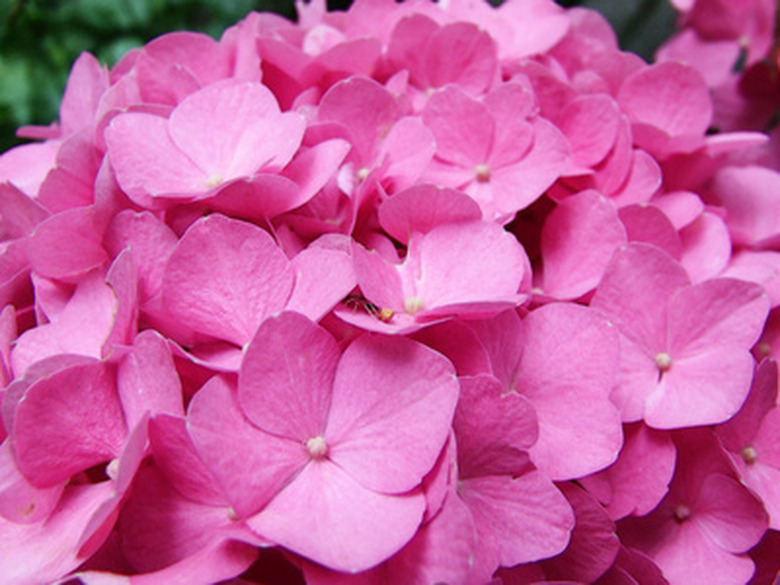How To Use Lime To Make Pink Hydrangeas
Hydrangeas shrubs produce large, deep green foliage and big clusters of flowers that range in color from pink, blue and white to red and purple. The type of soil and its pH plays an important role in determining bloom color. Increase the pH of your soil by adding lime to it in early spring or late fall to produce pink or red hydrangea blooms. While adding lime to potted hydrangeas may be simpler, you can also incorporate it in your garden soil to produce a bed of beautiful pink French hydrangeas.
Step 1
Dig a 6-inch deep hole in your planting area and collect some dirt from the hole. Place it in a plastic zipper bag and send it to your local garden supply center to test its pH value, or test the soil yourself with a soil test kit. Generally, a pH level between 6.5 and 7.0 is ideal for growing pink hydrangeas. You will add lime to increase the soil's pH.
- Hydrangeas shrubs produce large, deep green foliage and big clusters of flowers that range in color from pink, blue and white to red and purple.
- While adding lime to potted hydrangeas may be simpler, you can also incorporate it in your garden soil to produce a bed of beautiful pink French hydrangeas.
Step 2
Purchase lime from your local garden supply center. Generally, you must apply 2.5 to 5 lbs. of lime for every 100 square feet of land, or use 3 to 4 tbsp. for two to three medium-sized hydrangeas.
Step 3
Sprinkle lime around each hydrangea plant, at soil level. Avoid sprinkling it on the foliage. Or, add 1 tbsp. of hydrated lime to 1 gallon of water and pour it around the base of the hydrangea plants.
- Purchase lime from your local garden supply center.
- of hydrated lime to 1 gallon of water and pour it around the base of the hydrangea plants.
Step 4
Rake the area to ensure the lime goes deep down in the soil, to the roots. Or shovel it in by turning the soil so it mixes well. Do not disturb or break the roots when doing this. Add a layer of cedar mulch over the soil.
Step 5
Transplant your hydrangea plants in the soil, digging a hole for each the size of the root ball. Tamp the soil around each plant and water the soil until it is moist. The roots will absorb the lime and blooms will be pink when they appear on the plant.
- Rake the area to ensure the lime goes deep down in the soil, to the roots.
- Tamp the soil around each plant and water the soil until it is moist.
Tip
Add lime pellets to the soil that break up with time. Apply lime to the soil once a year, in early spring or fall. This gives the lime plenty of time to break down and mix with the soil before the growing season. Always use only the specified amount. Overdoing it can be harmful to the plant, and may actually kill it. Fertilize the soil several weeks, or even a few months, after adding lime. Adding lime to the soil changes its chemical properties. Check that plants that require acidic soil do not share growing space with your hydrangeas.
Things Needed
- Shovel
- Zipper bag
- Lime
- Gloves
- Rake
- Cedar mulch
- Hydrangea plants
